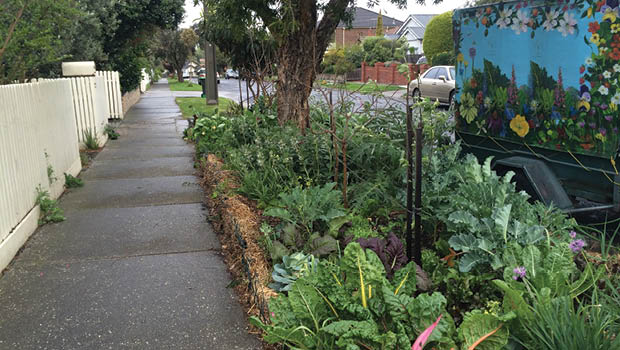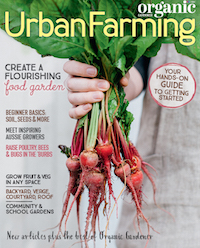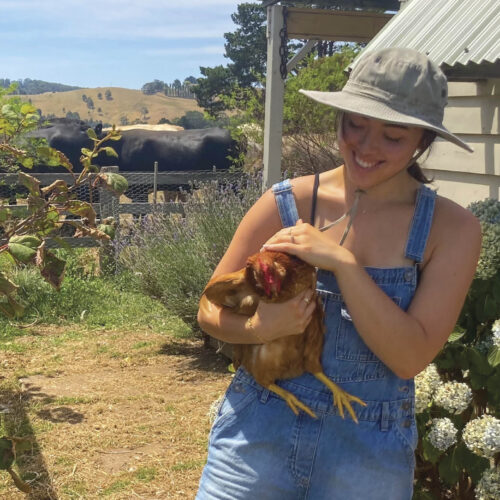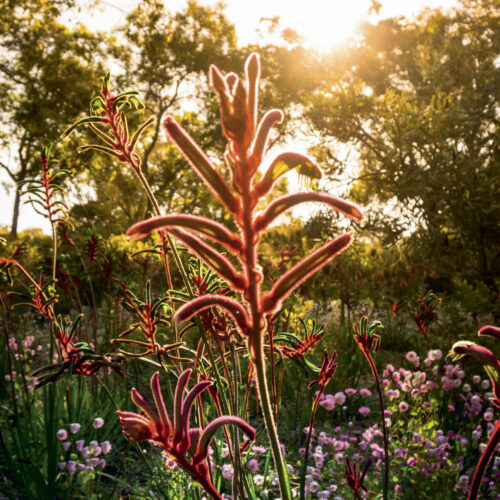Food for one (and all)
2017-05-24T04:35:35+10:00
Karen Sutherland explores the etiquette of growing (and harvesting) food on a nature strip, with simple ideas for keeping neighbours happy.
Although I’ve lived in the same quiet cul-de-sac for more than 25 years and am friends with most of my neighbours, I didn’t have as many conversations about growing and cooking food until after I started gardening outside my front fence. Standing out the front with a hose on a warm summer night, I have neighbours from various nationalities stroll up and let me know how they use various plants and also the useful weeds I carefully contain. Anna, my Italian neighbour, uses milk thistle in salads, whereas Christina, my Greek neighbour prefers it added to ‘horta’, the popular Greek dish of mixed cooked greens.
Some neighbours are so polite that I struggle to get them to pick some of the ever-abundant parsley, while some passers-by remove large quantities of just-ripening fruit or whole plants without so much as a word (although luckily this is an infrequent occurrence)!
Educating Rita
Education is part of any community gardening, and let’s not forget that not everyone has the same attitudes towards or experience in gardening. I stopped one woman walking her dog past one day and pointed out that the ‘leaves’ she was picking for her budgie were in fact whole new plants with roots, and that if left in place they would provide leaves for me, her and others. A sign suggesting ‘Pick leaves not plants!’ with accompanying diagrams has proved helpful and another explaining ‘Don’t pick me yet I’m just a baby!’ has been a favourite of local children.
Sharing is caring
I’ve found it less stressful to grow food plants that can be shared by a lot of people. My sole cabbage was taken early on, so I now grow varieties of repeat-harvest kale instead, which is also hardy in the wind and exposure a street garden has to tolerate. Perennial kale lasts 3–5 years and has been ornamental as well as a conversation starter with Greek and Italian neighbours, who recognise this old variety from their villages.
Because I also like my street garden to look attractive, so that people can relate to it, I prefer to grow five-coloured chard in preference to silverbeet. I planted some at each end of the garden and for many months my next-door neighbour loved these last- minute dinner greens. I grow leafy lettuces in the cooler months, letting them stay until they’ve dropped a good amount of seed so I know they will return when the weather cools again. Nasturtiums also self-seed and grow in cooler weather and I harvest the flowers, leaves, flower buds and seeds.
I’ve used plants to border the garden, including herbs such as garlic chives, society garlic and daylilies, all edible and hardy plants. Pineapple sage is a hit with small children, who enjoy the edible flowers and pineapple-scented leaves.
Grow or no?
Before you start digging outside your property, you should take care of three important pieces of business:
1. Check with your local council regarding the regulation on whether and what you can plant and if you need a permit.
2. Contact Dial Before You Dig (1100.com.au) to check locations of underground services as it could be dangerous and/or expensive to damage these.
3. Check for soil contamination – The main issue being heavy metals, this is often quoted by councils as a reason not to use B this land for growing food. However, when I tested my garden and the nature strip garden, I found the soil in the latter to be cleaner than other parts of my garden in which I had been growing for years!
You can find more on growing on nature strips (and backyards, courtyards, balconies, rooftops, school yards and community gardens) in the ABC Organic Gardener Essential Guide: Urban Farming.







